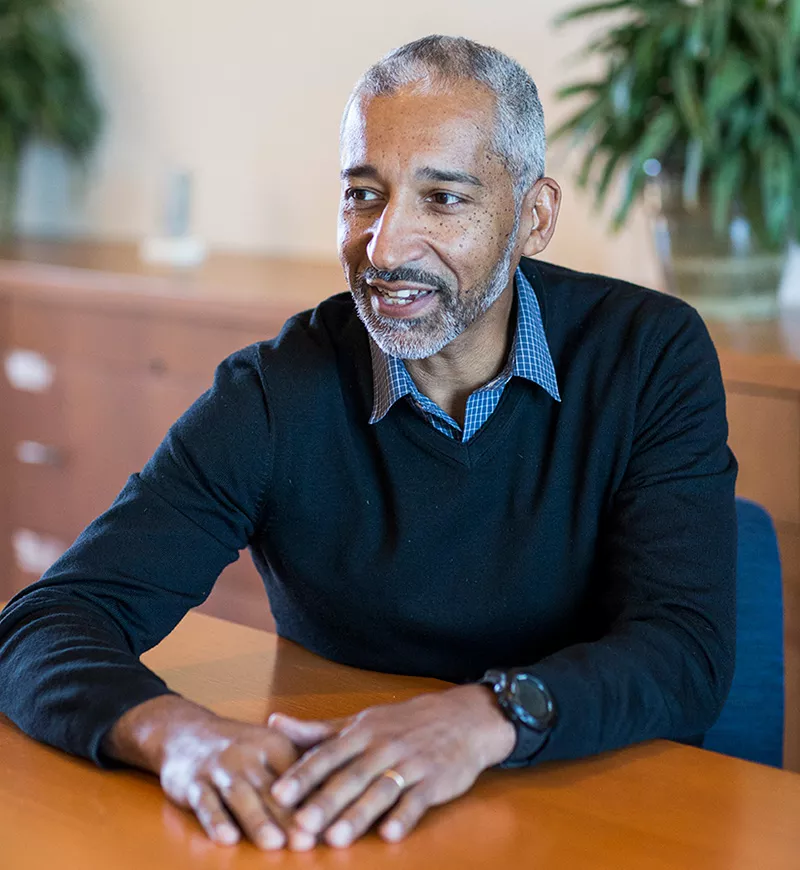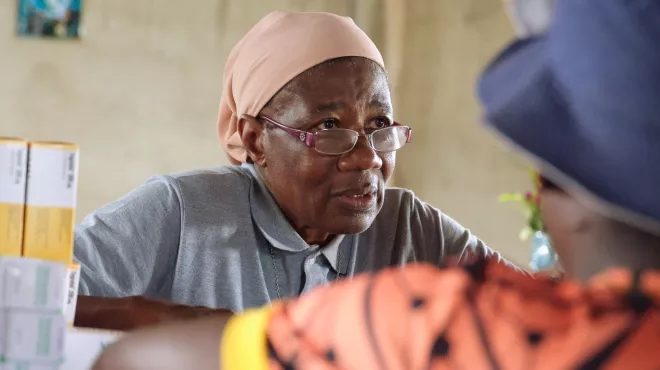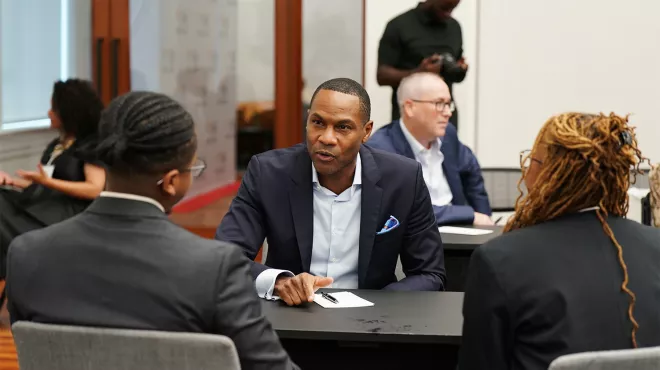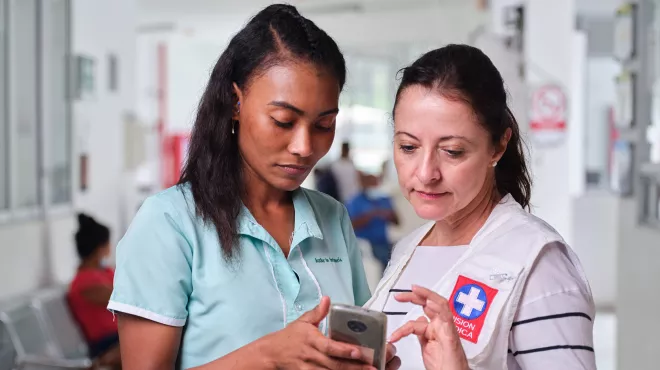Thierry Diagana has dedicated his career to unravelling the complexities of the malaria parasite, which he describes as an “incredibly smart enemy that has shown an uncanny way of defeating everything we’ve thrown at it.”
At the helm of the Novartis Institute for Tropical Diseases (NITD), a drug discovery research institute dedicated to neglected tropical diseases, he uses cutting-edge science to discover new medicines that support the elimination of infectious diseases like malaria. Despite remarkable progress, malaria continues to take a heavy toll on African children, killing one child every minute.
We talked to Thierry to learn about the threat of drug resistance and why we need to stay one step ahead of the parasite to reach malaria elimination.
What drew you to the field of malaria research?
My ancestors are from Sub-Saharan Africa, where malaria continues to be a devastating public health issue. That connection has always been essential to me. I have family members living in malaria-endemic countries, and I grew up hearing stories of how malaria is destroying families. This is one reason that attracted me to malaria. And then, there is the science. The parasite exhibits an extraordinarily complex life cycle, which fascinates me as a scientist. Every time I learn something about the parasite, I am in awe of the almost supernatural intelligence that guides its evolution. For those two reasons, I’ve always been passionate about malaria research, and I’m grateful to have been working with incredibly smart colleagues over the past decades.
Why is it important for organizations like Novartis to continue to invest in malaria?
It’s the right thing to do. When Novartis took the conscious decision more than two decades ago to make malaria a priority – despite the lack of commercial incentives for companies to conduct research and development (R&D) in the field – it was because as a science organization, we have a moral obligation to drive innovations for unmet needs.
And we should be very proud of what we have accomplished. Since the launch of our fixed-dose artemisinin-based combination therapy (ACT) in 1999, our industry-leading pipeline has enabled us to put out development candidates one after another.
We see resistance developing to malaria medicines, in particular to artemisinin. Is this threat real and how can we counter it?
The threat of drug resistance is real! Over the years, the malaria parasite has constantly evolved and found ways to defeat the medicines we introduced to combat it. We’re now at a juncture where we could find ourselves in a situation similar to what happened 40 years ago, when chloroquine totally failed because of drug resistance.
Gene mutations have occurred in the past 15 years. In particular, the so-called K13 mutations (marker for artemisinin resistance) are associated with delayed parasite clearance, which could be a harbinger for full-on drug resistance. We see these mutations now nearing fixation in Asia and emerging in Sub-Saharan Africa. Further mutations could lead to failure of current antimalarials in the next decade or so, and this is why we need to be prepared.
Thanks to our substantial investments in malaria R&D over the years, we now have identified four compounds with novel mechanisms of action that are all effective against these K13 mutants. So, I believe we are in a good position to anticipate and mitigate the risk of drug resistance to artemisinin drugs.
Yet, is there a risk that next-generation medicines also become ineffective due to potential resistance?
Next-generation antimalarials use new mechanisms of action against the parasite but they all could potentially be defeated by drug resistance, which is why we will only develop them as combination therapies. In addition, we have attempted to minimize the risk of drug resistance in the first place, by focusing on drug candidates with fast-acting activity and a very high barrier to drug resistance in the lab.

A malaria vaccine has been introduced recently. Does this change what you are doing, or make your efforts redundant?
We absolutely need a vaccine for malaria, and it’s a great complement to the current tools we have. Yet, even if the vaccine prevents people from developing severe forms of the disease, it won’t stop infections. That’s why we shouldn’t take our foot off the pedal, we need both good vaccines and effective therapeutics. COVID is a perfect illustration of this. We have vaccines, yet the world is still in dire need of therapeutics, so we can treat people who get infected. A key point to add here is that besides prevention and treatment tools, what will move us closer to malaria elimination is investment in health infrastructure and capability in endemic countries, and universal access to quality health services.
Do you include access considerations in the very early stages of drug discovery?
Yes, we think about access very early on, and the best way to do that is to build specific features into a drug’s target profile. For instance, we look at the cost of goods to manufacture our compound with a view to make the end product as affordable as possible. We also consider the drug’s formulation to ensure it is adapted to children, who are the most impacted by malaria. Stability in tropical climates is another parameter we take into account by ensuring the molecule’s physico-chemical properties keep the compound stable under hot and humid conditions. Ultimately, we want to remove the hurdles to access by making our drugs as convenient as possible for public health officials and malaria control programs to adopt and deploy. It’s much easier to integrate these parameters upfront than to retrofit those features when compounds have progressed into human studies.
What needs to happen to ensure we eliminate malaria for good?
That’s a big question! Many things need to happen but first and foremost, we need the perseverance and grit to deal with an incredibly smart enemy. Malaria has shown an uncanny way of defeating everything we’ve thrown at it. We now even see mosquitoes changing their biting patterns and biting in the day rather than at night to defeat insecticide-treated bed nets. There has been a constant battle between man and malaria, and the parasite has always taken us by surprise. We’re in for the long run and our best line of defense is to continue to innovate, stay one step ahead of the parasite, anticipate every one of its moves, and put constant pressure on it.
But Novartis is certainly not alone in this fight. We need everybody’s best efforts to eliminate malaria, and the continuing invaluable work of our partners and the entire global malaria community.
Thierry Diagana, Head of the Novartis Institute for Tropical Diseases, explains why we need to stay one step ahead of the malaria parasite to beat resistance.



